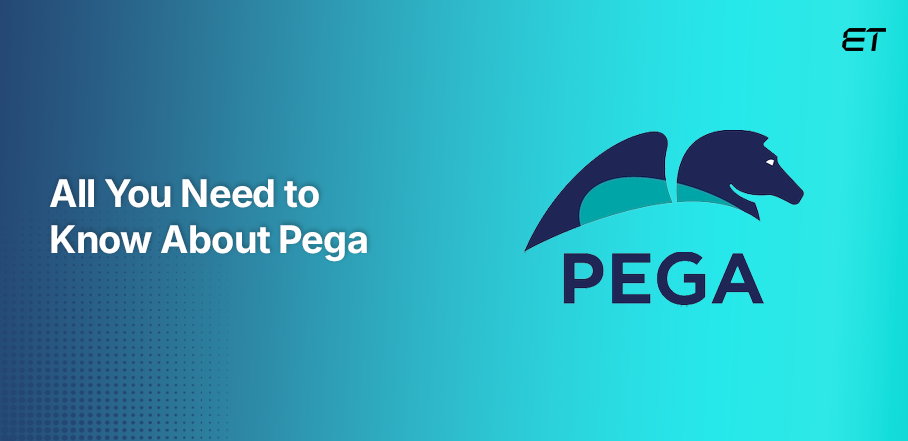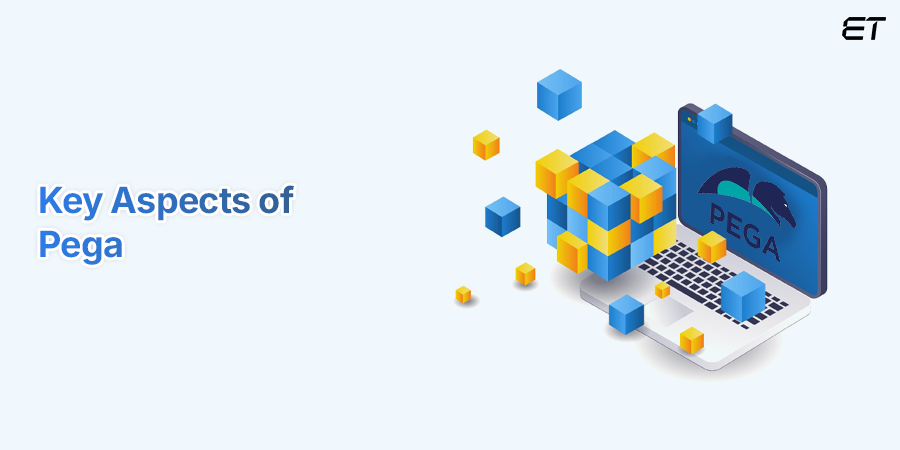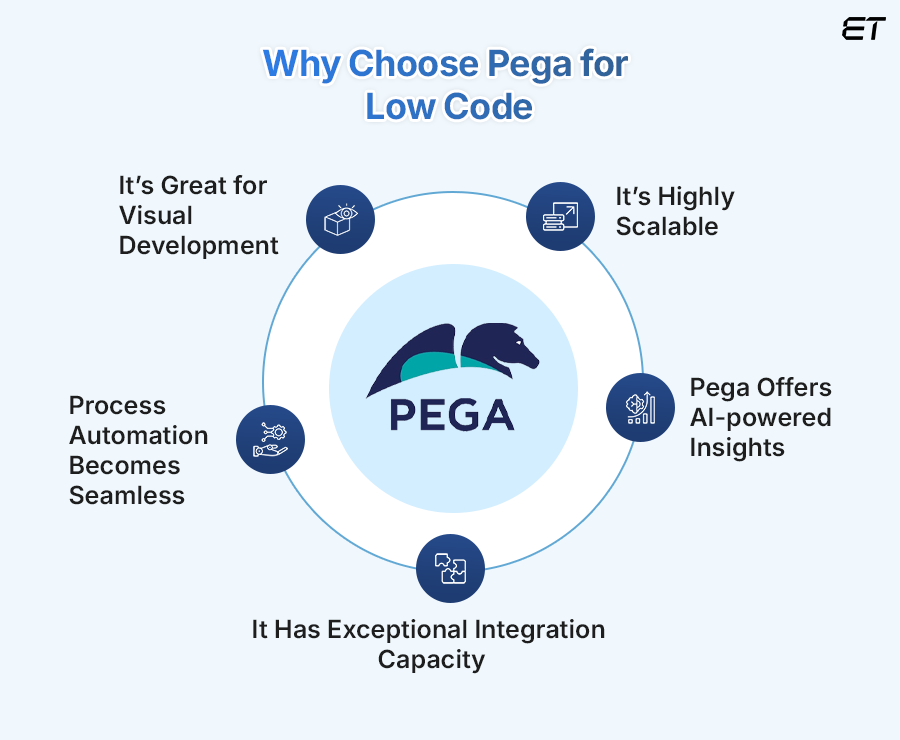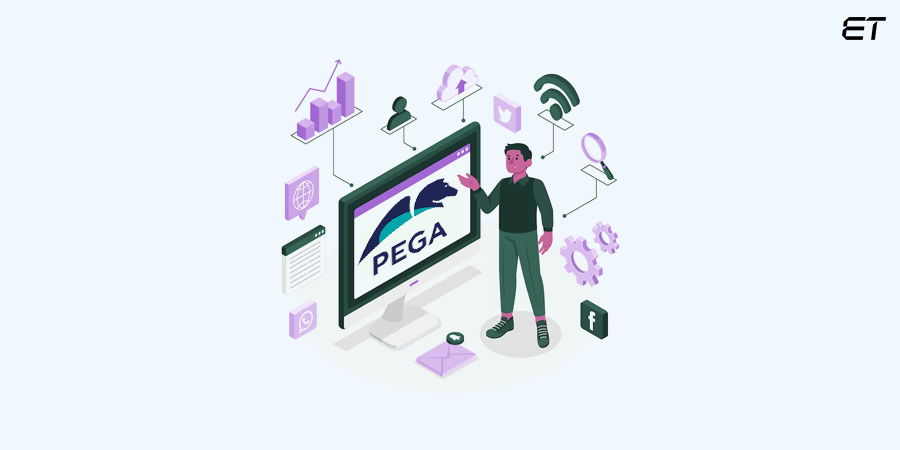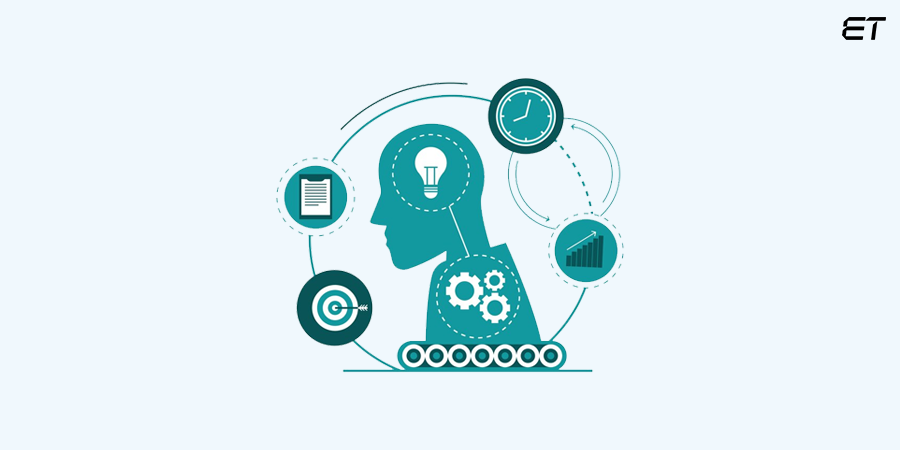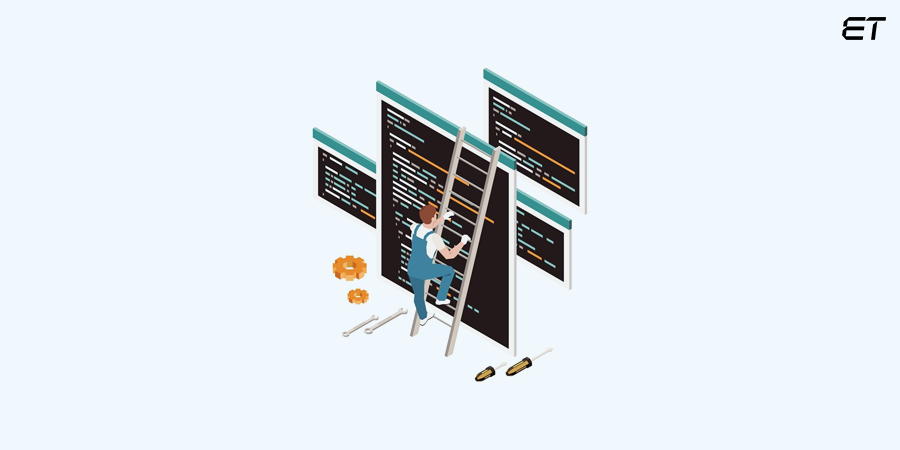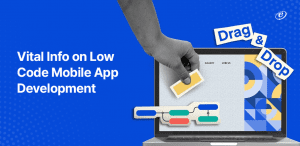Today, it is possible to overcome the challenges of a slow and costly app development process. How? Low code options like Pega are game-changers in the ever-growing IT field.
These platforms provide simple features like a drag-and-drop interface to reduce the reliance on manual coding. Perhaps, this is the main reason for the impressive USD 32 billion valuation of low code development platforms.
But, the main question is – can the Pega platform suit your specific needs? Also, does it offer something different than prominent alternatives like Power Apps or Mendix?
Find the direct answers of all these questions in our blog. So, without any ado, let us inform you about an exciting platform that can boost your low code app development project.
Features and Benefits of the Pega Platform
Pega is short for Pegasystems Inc. It is a software company in the US and specializes in the following areas:
- Low code
- Artificial intelligence
- CRM
- Workflow management
- Business process management
Since its inception in 1983, the platform’s ‘easy to use’ vision has made it a popular name amongst IT enthusiasts and professionals. It has now become a great choice for low code app development due to the following reasons:
- Integration capabilities
- Scalability
- AI-powered insights
- Process automation
So, if you want to boost your low code game, Pega can be a great choice. The following table explains the main features and benefits of the Pega platform in brief:
| Feature | Benefit |
| Visual Development | Rapid application creation without in-depth coding knowledge |
| Process Automation | Improved efficiency and reduced errors by automating complex tasks |
| Integration Capabilities | Seamless connection with various systems and data sources |
| AI-Powered Insights | Data-driven decision-making and process optimization |
As you can observe, Pega has result-oriented features that make it an excellent choice for developing applications with low to minimal coding.
Save your invaluable time! Our team can assist in performing efficient low code development.
Pega in Action: Why it’s Suitable for Low Code
In this section, we’ll quickly elaborate the main reasons or features that make Pega a compelling choice for low code development.
Visual Development
This key feature sets the Pega platform apart from traditional coding methods. It leverages a drag-and-drop interface to simplify the process of building applications, making it accessible to both technical and non-technical users.
Here’s a deeper dive into the visual development capabilities of Pega:
Graphical User Interface (GUI)
- Pega’s GUI is user-friendly with clear and easily understandable components
- Developers can drag and drop elements onto a canvas to create the application’s interface
- You can model and visualize business processes using a graphical workflow editor
Component-Based Development
- Pega provides a library of pre-built components, such as buttons, forms, and data grids that can be reused across different applications
- You can customize these components to meet specific requirements, ensuring flexibility and efficiency
Rule-Based Automation
- It’s possible to create and manage rules that define application behavior without the need for complex coding
- Also, you can implement complex decision-making using visual decision tables and flowcharts
In essence, visual development in Pega empowers users to focus on the business logic and functionality of their applications.
Process Automation
Process automation in Pega is a powerful feature that enables organizations to streamline their operations and improve efficiency. By automating repetitive and manual tasks, Pega can reduce errors, save time, and enhance overall productivity.
The vital aspects of process automation in Pega include:
- Visual Workflow Modeling: Pega provides a graphical interface for designing and visualizing business processes
- Task Automation: It can automate various tasks within a process, such as data entry, calculations, and decision-making
- Case Management: The case management capabilities allow tracking and managing of individual cases or requests throughout their lifecycle
- Decision Management: Pega provides tools for creating and managing decision rules, which can automate decision-making processes
The following are the main benefits of process automation in Pega:
- Improved Efficiency
- Reduced Errors
- Enhanced Customer Experience
- Cost Savings
All in all, process automation in Pega can automate repetitive tasks and optimize workflows effectively.
Integration Capabilities
Pega’s integration capabilities are key to its versatility and effectiveness. It can connect with various systems and data sources, allowing you to create comprehensive and unified solutions.
Key aspects of integration capabilities in Pega include:
- Connectors
- Custom Integrations
- Data Mapping
- Real-time Integration
- Integration with Cloud Services:
The benefits of integration capabilities in Pega are as follows:
- Unified Solutions: By integrating with various systems, Pega can create unified solutions that provide a single view of the business
- Improved Data Management: Pega’s integration capabilities help to ensure that data is accurate, consistent, and accessible across the organization
- Increased Efficiency: Integration can streamline processes and reduce manual data entry
- Scalability: Pega’s integration capabilities can scale to meet the needs of growing businesses and complex environments
Overall, Pega’s integration capabilities can help organizations streamline their operations, improve data management, and boost decision-making.
Need an in-depth guide on API integration? We got you covered. Get all the details on API integration, tools, and platforms in our informative blog.
AI-Powered Insights
The AI-powered insights feature leverages artificial intelligence (AI) to enhance decision-making and optimize processes. By analyzing data and identifying patterns, Pega can provide valuable insights that can help improve efficiency, reduce costs, and enhance customer satisfaction.
The key aspects of AI-powered insights in Pega are as below:
- Predictive Analytics
- Machine Learning
- Natural Language Processing (NLP)
- Intelligent Automation
- Real-time Insights
If you choose the Pega platform for low code development, you can notice the following benefits:
- By automating tasks and optimizing processes, AI can improve efficiency and reduce costs
- You can use AI to personalize customer interactions and provide better service
- AI can help identify potential risks and take proactive measures to mitigate them
- You can also develop new products and services and stay ahead of the competition
All in all, AI-powered insights in Pega help analyze data and identify patterns. This platform can provide valuable insights that can help organizations make better decisions, reduce costs, and enhance customer satisfaction.
Want to leverage the true potential of AI? Hire our AI developers to create mesmerizing apps with ease!
Scalability and Flexibility
In simple terms, Pega can adapt to changing business needs and handle increasing workloads. This aspect ensures that it remains a valuable asset as the organization grows.
Let’s decode the critical components of this wonderful low code platform:
- Scalability: Pega can handle large volumes of data and transactions, making it suitable for organizations with high-volume workloads
- Flexibility: It is highly customizable, allowing organizations to tailor the platform to their specific needs
- Component-Based Architecture: Pega’s component-based architecture makes it easy to add new features and functionality to applications without having to rewrite existing code
- Cloud-Based Deployment: You can deploy the Pega platform on-premises or in the cloud
This aspect offers the following benefits:
- Growth Accommodating
- Adaptability
- Reduced Costs
By adapting to changing business needs and increasing workloads, Pega can help you achieve your goals quickly.
Is Pega Different Than Power Apps and Mendix?
Power Apps and Mendix are other popular options in the low-code app development market. A direct comparison can help you decide on the best platform for your project.
In this section, we’ll compare the three low-code platforms. If you want us to create an in-depth comparison blog, be sure to leave a comment.
| Feature | Pega | Power Apps | Mendix |
| Strengths | Process automation, case management, customer service | Rapid app development, integration with Microsoft products | Rapid app development, flexibility, extensibility |
| Target Audience | Enterprises seeking process optimization and customer experience improvements | Businesses looking for quick app development and integration with Microsoft ecosystem | Enterprises and SMBs needing flexible and customizable applications |
| USP | Deep-rooted expertise in process automation and case management | Strong integration with Microsoft products and services | Highly customizable and extensible platform, suitable for complex applications |
| Focus | Process-driven applications, customer engagement | Rapid prototyping and development of line-of-business apps | Flexible and scalable applications for various industries |
Need to know more about Mendix vs Power Apps? We have the right comparison blog for you.
To Sum Up – Is Pega Apt for You?
Pega is a powerful low-code platform with a unique combination of features suitable for various organizational projects. Its emphasis on process automation, case management, and customer experience sets it apart from other low-code options.
While other platforms like Power Apps and Mendix excel in different areas, Pega’s deep-rooted expertise in process optimization and its ability to handle complex business scenarios make it a compelling choice. If you’re looking to streamline your operations, enhance customer satisfaction, and build scalable applications, the Pega platform can be an ideal low-code choice.
To learn more about Pega and how it can benefit your organization, consider reaching out to our team for a consultation.
Frequently Asked Questions
1. What is the difference between Pega Platform and Pega Infinity?
Pega Platform is the foundational platform that provides the core capabilities. On the other hand, Pega Infinity is a suite of products and services built on top of the platform, offering additional features and functionality for specific industries and use cases.
2. How does Pega compare to other popular low-code platforms like Salesforce Lightning and OutSystems?
Pega differentiates itself by its focus on process automation, case management, and customer experience. While other platforms may excel in certain areas, Pega’s expertise makes it a compelling choice for many organizations.
3. Can I use Pega to develop mobile applications?
Yes, you can use Pega to develop mobile applications. It provides tools and capabilities to create mobile-friendly user interfaces and integrate with mobile devices.
4. What is the cost of using Pega Low-Code?
The cost of using Pega depends on various factors, including the size of your organization, the complexity of your applications, and the level of support you require. You should explore the official site for accurate information and quotes.
Project Delivery Head
Nitin has over 20 years of IT experience and 3+ years of experience in on-site work in Arizona, USA. In all these years, he has held the positions of delivery manager, module lead, and senior consultant. Expert in advocating product life cycle phases while using self-motivational skills and problem-solving abilities. He works on the principle of “Always Deliver More than Expected.”
